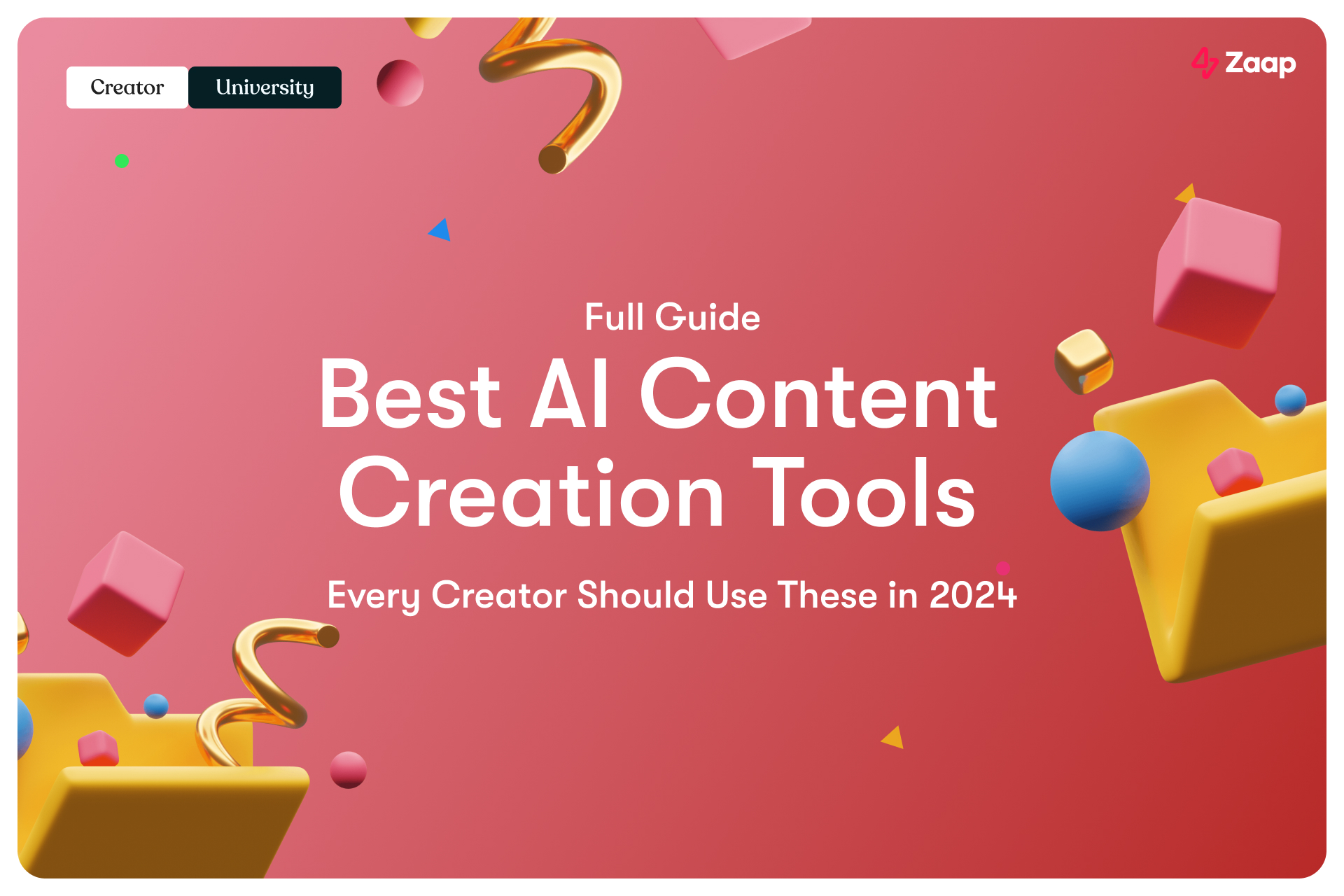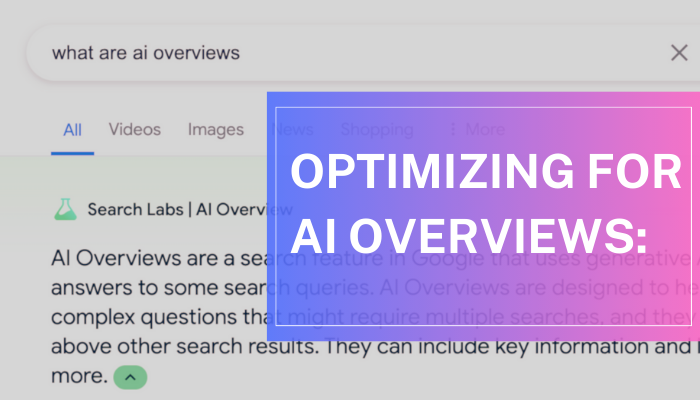
In the ever-evolving landscape of digital marketing, the integration of generative AI and large language models (LLMs) has become a game-changer. As marketers, we’re constantly seeking ways to stay ahead of the curve, and optimizing content for these powerful tools is no longer optional—it’s essential. With the rise of AI Overviews and other AI-driven search features, understanding how to tailor your content for these systems can significantly boost your visibility, engagement, and overall performance.
This article will guide you through the key strategies, best practices, and tools needed to optimize your content for generative AI and LLMs in 2025. Whether you’re a seasoned marketer or just starting out, this comprehensive resource will help you harness the power of AI to enhance your content strategy and achieve better results.
What Is Generative AI and Why It Matters
Generative AI refers to a subset of artificial intelligence that uses deep-learning models to produce creative and original content based on the data it is trained on. These models can generate text, images, audio, and more, making them invaluable tools for content creation. Unlike traditional AI, which follows predefined rules, generative AI learns from vast amounts of data and can create content that is not only unique but also contextually relevant.
For marketers, the significance of generative AI lies in its ability to streamline content creation processes, reduce human effort, and improve personalization. According to a recent survey, 73% of marketers believe AI helps create personalized customer experiences, while 50% use AI tools to generate content. This shift underscores the importance of understanding and leveraging generative AI to stay competitive in the digital space.
How Generative AI Impacts SEO Performance
The integration of generative AI into SEO strategies is reshaping how content is created and optimized. Here are some key ways in which generative AI influences SEO performance:
- Enhanced Content Quality: AI tools can generate high-quality content that is both engaging and informative, helping to improve user experience and increase dwell time on your site.
- Improved Keyword Optimization: By analyzing search trends and user intent, AI can help identify the most effective keywords to include in your content, thereby increasing your chances of ranking higher in search engine results.
- Personalized Content Creation: Generative AI allows for the creation of personalized content tailored to specific audiences, which can lead to higher engagement and conversion rates.
- Faster Content Production: With AI, you can produce content at a much faster rate, allowing you to keep up with the demands of a rapidly changing market.
As you implement these strategies, remember that the goal is not to replace human creativity but to augment it. The synergy between human insight and AI capabilities can lead to more effective and innovative content.
Step-by-Step Implementation Framework
To effectively optimize your content for generative AI and LLMs, follow this structured approach:
1. Define or Audit the Current Situation
Start by assessing your existing content and identifying areas where AI can be integrated. Look for content that is repetitive, time-consuming, or lacks personalization. Tools like SurferSEO can help you analyze your current content and identify opportunities for improvement.
2. Apply Tools, Methods, or Tactics
Utilize AI-powered tools such as Jasper, Claude, and OpenAI to generate content, brainstorm ideas, and optimize your existing material. These platforms offer features that can help you create content that aligns with your brand voice and meets the needs of your audience.
3. Measure, Analyze, and Optimize
After implementing AI tools, track the performance of your content using analytics platforms. Monitor metrics such as traffic, engagement, and conversion rates to determine what works and what doesn’t. Use this data to refine your strategies and make informed decisions about future content creation.
Real or Hypothetical Case Study

Consider the case of a fictional e-commerce company, “TechGear,” that wanted to enhance its content strategy using generative AI. By implementing AI tools, TechGear was able to:
- Generate product descriptions that resonated with different customer segments.
- Create engaging blog posts that addressed common questions and concerns.
- Improve SEO rankings by optimizing content for relevant keywords.
As a result, TechGear saw a 30% increase in organic traffic and a 20% rise in sales within six months. This example illustrates the potential impact of optimizing content for generative AI and LLMs.
Tools and Techniques for Generative AI Optimization
To maximize the benefits of generative AI, consider the following tools and techniques:
- Jasper: A powerful AI writing tool that helps you create content quickly and efficiently. It offers a variety of templates and can be customized to match your brand voice.
- Claude: Known for its responsible AI approach, Claude is ideal for creating content that requires nuance and sensitivity. It’s particularly useful for editorial work and in-depth articles.
- OpenAI: The leading platform for AI content generation, OpenAI’s GPT models are versatile and can be used for a wide range of tasks, from brainstorming ideas to writing marketing copy.
- SurferSEO: This tool focuses on SEO optimization, providing insights into keyword research, content structure, and competitor analysis. It helps you create content that ranks well on search engines.
- Vocable: An all-in-one content creation solution that streamlines the process from research to publishing. It offers features for ideation, outlining, and editing, making it a valuable asset for any content team.
Future Trends and AI Implications

As we look ahead, the role of generative AI in content creation will continue to evolve. Here are some trends to watch:
- Increased Personalization: AI will enable even more personalized content, allowing brands to connect with their audiences on a deeper level.
- Enhanced Voice Search Optimization: With the rise of voice assistants, optimizing content for voice search will become increasingly important.
- Integration with Multimodal Search: As search engines incorporate more visual and audio elements, content creators will need to adapt their strategies to include these formats.
Staying ahead of these trends will require continuous learning and adaptation. Embrace the power of AI and be proactive in integrating it into your content strategy.
Key Takeaways
- Understand Your Audience: Tailor your content to meet the specific needs and search intents of your audience.
- Use Clear and Structured Language: AI tools thrive on clarity, so keep your content concise and easy to read.
- Leverage Semantic SEO: Focus on meaning and context rather than just keywords to improve your content’s relevance.
- Optimize for Featured Snippets: Structure your content to answer questions directly and concisely to increase your chances of appearing in featured snippets.
- Maintain a Consistent Voice: Ensure your content reflects your brand’s identity and tone consistently across all platforms.
By implementing these strategies, you’ll not only enhance your content’s visibility but also build a stronger connection with your audience. The future of content creation is here, and it’s powered by AI.
Meta Title:
How to Optimize Content for Generative AI and Large Language Models in 2025
Meta Description:
Learn how to optimize your content for generative AI and LLMs in 2025 with actionable strategies, tools, and insights to boost SEO and engagement.
SEO Tags (5):
- Generative AI
- Large Language Models
- SEO Optimization
- Content Strategy
- AI Overviews
Internal Link Suggestions:
- Parameter #1: Understanding AI in Digital Marketing
- Parameter #2: SEO Best Practices for 2025
- Parameter #3: Content Creation Tools for Marketers






